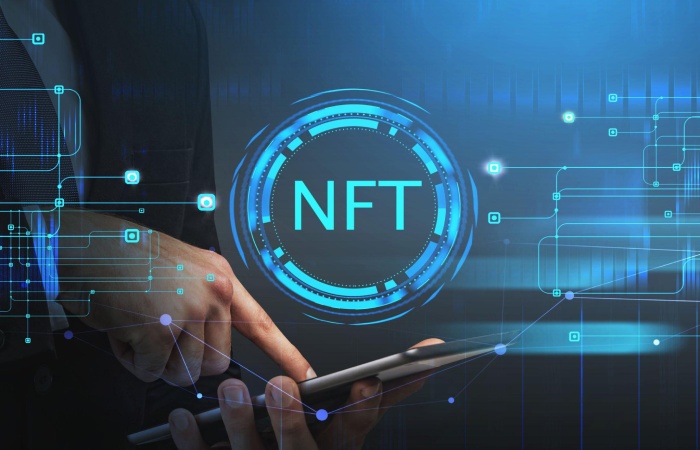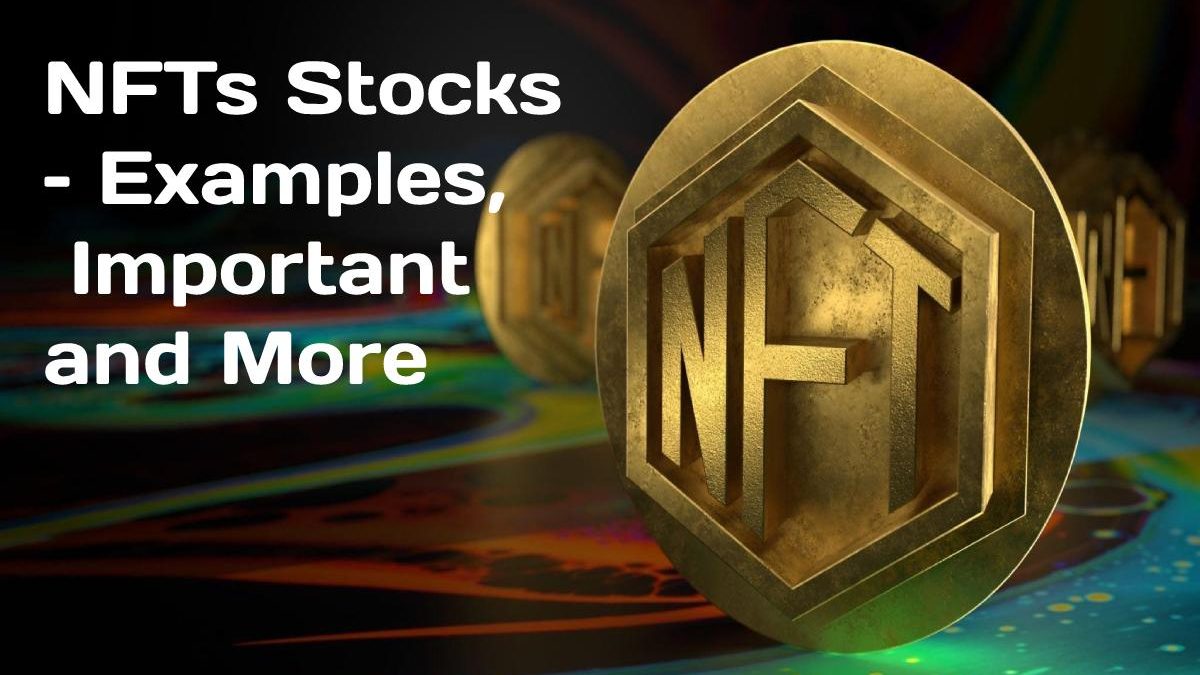NFTs Stocks – Non-Fungible Tokens (NFTs) are crypto resources on a blockchain with unique documentation codes and metadata that separate them from one more. Unlike cryptocurrencies, they cannot be traded or replaced for equivalents. It distinguishes them from fungible tokens such as cryptocurrencies, which are identical to each other and can so serve as a medium for business transactions.
Examples of NFTs
Perhaps the most well-known use case of NFT is that of Cryptokitties. Launched in November 2017, Cryptokitties are digital symbols of cats with unique IDs on the Ethereum blockchain. Each kitten is special and has a price in Ether. They breed among themselves, producing new offspring with different traits and ratings than their parents.
Within weeks of their release, the cryptokitties garnered a following that spent $20 million worth of Ether to buy, feed, and nurture. Some enthusiasts even spent more than $100,000 on the effort.
More freshly, the Bored Ape Yacht Club has attracted controversial attention due to its high prices, celebrity ensuing, and high-profile thefts of some of its 10,000 NFTs.
While the Cryptokitties and Bored Ape Yacht Club use cases may seem trivial, others have more severe business suggestions. For example, NFTs are cast off in private equity and real estate transactions.
One of the implications of activating multiple types of tokens in one contract is the ability to provide escrow for different kinds of NFTs, from artworks to real estate, in a single economic transaction.

Why is NFTs Important?
Non-fungible tokens are a growth of the relatively modest concept of cryptocurrencies. Modern financial systems are sophisticated trading and credit systems for various assets, from real estate to loans and advances to works of art. By enabling digital pictures of physical assets, NFTs are a step forward in reinventing this infrastructure.
Indeed, the idea of digital representations of physical assets is not new, nor is the use of a unique identifier. However, when these concepts join with the benefits of a tamper-proof intelligent contract blockchain, they become a powerful force for change.
Perhaps the most apparent benefit of NFTs is market efficiency. Converting a physical asset into a digital asset streamlines processes and eliminates intermediaries. NFTs, which signify digital or physical artworks on a blockchain, remove the need for agents and allow performers to connect directly with their audience. You can also improve business processes. For example, an NFT for a bottle of wine facilitates the interaction of different actors in a supply chain, helping to track provenance, production and sales throughout the process. Ernst & Young has already advanced a solution for one of its customers.
How to buy NFT?
Many NFTs can only accept Ether, so owning a portion of that cryptocurrency — and storing it in a digital wallet — is often the first step. You can buy NFTs on all online NFT markets, including OpenSea, Raible and Super Rare.
Is NFT safe?
Non-fungible tokens using blockchain technology like cryptocurrency are generally safe. The spreading nature of blockchains makes NFTs difficult (though not impossible) to hack. A security risk with NFTs is that you could lose contact with your non-fungible token if the podium hosting the NFT goes out of service.
How is an NFT changed from a Cryptocurrency?
NFT stances for non-fungible tokens. It’s usually created using the same cryptocurrency programming as Bitcoin or Ethereum, but that’s where the similarity ends.
Physical money and cryptocurrencies are “fungible” since they can be traded or exchanged. They are also the same – one dollar is always worth another; one bitcoin is always similar to another. Crypto’s fungibility makes it a reliable means of transacting on the blockchain.
NFTs are different. Each has a digital autograph that makes it impossible for NFTs to be exchanged or equated (therefore, they are non-fungible). For example, an NBA Top Shot clip is not comparable to every day as both are NFTs. (By the way, an NBA top-shot clip is not essentially the same as another NBA top-shot clip.)
How does an NFT work?
NFTs exist on a blockchain, a public distributed ledger that records communications. You are probably most aware of blockchain as the underlying process that enables cryptocurrencies.
In particular, NFTs are typically held on the Ethereum blockchain, although other blockchains also support them.
An NFT is created, or “coined”, from digital objects that represent tangible and intangible things, including:
- art
- gifs
- Sports videos and highlights
- collectables
- Virtual avatars and video game skins
- designer sneakers
- song
Even tweets count. Twitter co-founder Jack Dorsey sold his first tweet as NFT for over $2.9 million.
Essentially, NFTs are like physical collectables, only digital. So, the buyer will receive a digital file instead of having an actual oil painting hanging on the wall.
You also get exclusive property rights. Correct: NFTs can only have one owner at a time. The unique data of NFTs makes it easy to verify your ownership and transfer tokens between owners. The owner or creator may also store certain information in it. For example, artists can sign their artwork by including their signature in the metadata of an NFT.
Conclusion
NFTs create a perfect way to sell digital art that may not have much market. In addition, there are ways for artists to receive fees for each subsequent art sale,” says Ceesay. “Conversely, digital art collectors can speculate and brag about rare collectables from the net.”
Related posts
Featured Posts
SEO Books – 10 Best SEO Books
A significant first step is to look for the best SEO books to enter the world of SEO if you…
Work From Home – Advantages, Disadvantages, and More
Working from home allows you to manage both home and work at the same time. Working from home is especially…



